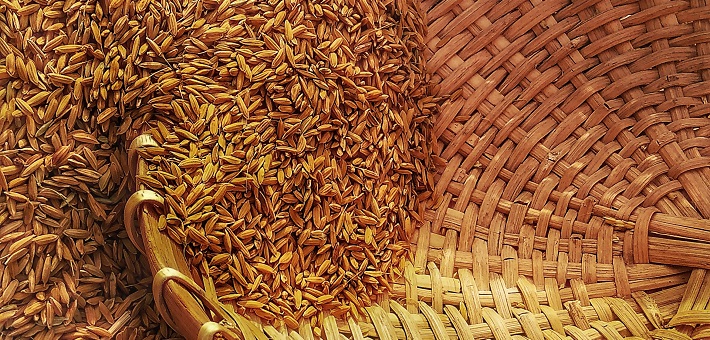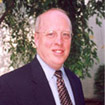Commentary on 1 Corinthians 15:35-38, 42-50
Epiphany is a season of revelations and manifestations. These words of Paul to the people of Corinth call on them to ponder the ordinary experiences of life in order to understand the hidden things of God. To know the realm of God in all its dimensions, Paul encourages us to think about the differences between seeds and the plants they produce, or about the impermanence of flesh and blood, or about what it is like to look back on last year (or month or week) and assess how well we spent the hours of our days.
Paul seems to be fielding questions from the congregation, “How are the dead raised? With what kind of body do they come?” His initial response sounds exasperated, throwing up his hands and rolling his eyes, “Fool!” (Not Paul’s most patient, pastoral, “open mic” moment.) But he settles down and tries to answer questions about the afterlife with analogies to our here-and-now life (15:36). He mellows by the end, contrasting the limitations of this world with eternal qualities of the realm of God.
He starts with seeds. References to seeds and their value lie scattered throughout scripture.
- In creation, they are named as signifiers and sources of the renewal of life (Genesis 1:11-12, 29).
- The Law includes them as a category of giving back to God; a tithe of seed from the ground is “holy to the LORD” (Leviticus 27:30).
- Isaiah describes the capacity of God’s word “to accomplish what [God] purposes” with the analogy of a seed’s capacity to produce food for your table (Isaiah 55:10-11).
- In a parable, Jesus likens the sowing of seed to the proclamation of the Word, which finds root inside us and then might either wither, be crowded out, or come to life and produce abundance (Mark 4:1-20; Luke 8:1-15).
- Another parable compares the reign of God to a tiny mustard seed that grows into a source of shade, shelter, and new birth (Matthew 13:31; Mark 4:30-2; Luke 13:18-19).
- A third parable compares the reign of God and its mysteries to someone who plants seed in the ground, and over time it sprouts and grows “he knows not how” (Mark 4:26-7).
In using this image, Paul draws on a common, rich, agricultural image of new life that would be immediately accessible to many first century and later audiences. During the Epiphany season, all of the above images align with the theme of revelation and the manifestation of hidden possibilities. A common process—ever present in the natural growth from seed to plant, to food and shelter—mirrors the ways and power of God, ever-available and life-creating whenever they take root and grow inside of individuals and communities.
Paul takes this one step further, working with another dimension of this image. Paul’s statement that “What you sow does not come to life unless it dies” (15:36) speaks of movement, figuratively and literally, out of a state of death into an enduring life. He implicitly connects a truth of the agricultural world to what the reign of God both promises us and asks of us. Paul describes what the world offers us—the world that humans have created, with its structures, systems, and powers. It is, at best, impermanent, inevitably moving toward its ending. It is dishonorably disconnected from the ways of God. It cannot begin to offer the life energy and strength that God abundantly provides (15:42).
On the other hand, God promises an enduring, imperishable life. In contrast to what the world offers, this life intimately connects us to God’s gifts and glory. Because of the gifts and vitality of this life, it satisfies not only for an earthly lifetime but also into eternal life (15:42, 49). Eternal life is not mainly about never-ending-ness, but about strength and fullness. The ultimate point is not the eternal part but the life part, an everlasting fullness and completeness that transcends life in this world and death.
Paul illustrates that fullness of life by contrasting the life of those who only live within the realm of “the first Adam” (from the creation stories) with the life of those who live in the realm of “the last Adam,” Jesus Christ. Paul states, “The first man, Adam, became a living being”; the last Adam became a life-giving spirit … Just as we have borne the image of the man of dust, we will also bear the image of the man of heaven” (15:42, 49).
No matter how well designed and constructed, technologically advanced, beautifully proportioned, or well marketed, the best that the world of Adam can offer us is dust. The world we humans have created … we see its earth-boundedness, its dust-boundedness week by week, month by month simply by looking at the horizontal surfaces in our houses, on our streets, on our sidewalks, in our yards, and on pools and bodies of water. Dirt and dust comes from somewhere and accumulates everywhere. Vacuum, wipe, sweep, clean, or hose it down. Next week or next month, there’s that dust again. We inherited that dustiness at birth, born in the image of Adam.
Paul speaks of another image available to us, the image of God, not disintegrating into dust but steadily enduring with vibrancy, fullness, and even glory in the realm of Christ. For Paul, our bodies bear traces of the dust that we are and the dust that we will be. We labor within those limitations. But we also have available to us a realm of God in which we aren’t stuck with those limits. We can become, in Christ, a revelation, a manifestation of God’s hidden possibilities, lying within us, waiting to grow into life that death can’t end.


February 20, 2022